-
 Bitcoin
Bitcoin $104,726.7569
1.64% -
 Ethereum
Ethereum $2,498.7221
-2.84% -
 Tether USDt
Tether USDt $1.0006
0.04% -
 XRP
XRP $2.1735
0.55% -
 BNB
BNB $646.1374
-0.92% -
 Solana
Solana $149.9892
0.67% -
 USDC
USDC $0.9998
-0.02% -
 Dogecoin
Dogecoin $0.1795
0.23% -
 TRON
TRON $0.2773
1.50% -
 Cardano
Cardano $0.6656
0.97% -
 Hyperliquid
Hyperliquid $34.2378
1.08% -
 Sui
Sui $3.1670
3.57% -
 Chainlink
Chainlink $13.5178
0.00% -
 UNUS SED LEO
UNUS SED LEO $9.0231
2.03% -
 Avalanche
Avalanche $19.5829
-0.30% -
 Stellar
Stellar $0.2642
0.86% -
 Bitcoin Cash
Bitcoin Cash $396.9586
-0.12% -
 Toncoin
Toncoin $3.1464
-1.41% -
 Shiba Inu
Shiba Inu $0.0...01251
-0.40% -
 Hedera
Hedera $0.1656
0.67% -
 Litecoin
Litecoin $86.6370
0.15% -
 Polkadot
Polkadot $3.9270
-0.85% -
 Monero
Monero $323.6381
2.68% -
 Ethena USDe
Ethena USDe $1.0013
0.05% -
 Bitget Token
Bitget Token $4.6330
0.97% -
 Dai
Dai $0.9998
0.01% -
 Pepe
Pepe $0.0...01110
-1.90% -
 Pi
Pi $0.6228
0.49% -
 Aave
Aave $252.7413
-0.44% -
 Uniswap
Uniswap $6.0759
-1.66%
How do you interpret the KD indicator's low-level double bottom? What signal does a high double top represent?
The KD indicator helps crypto traders spot overbought and oversold conditions; a low-level double bottom signals potential upward reversal, while a high double top suggests a downward shift.
Jun 01, 2025 at 08:36 am
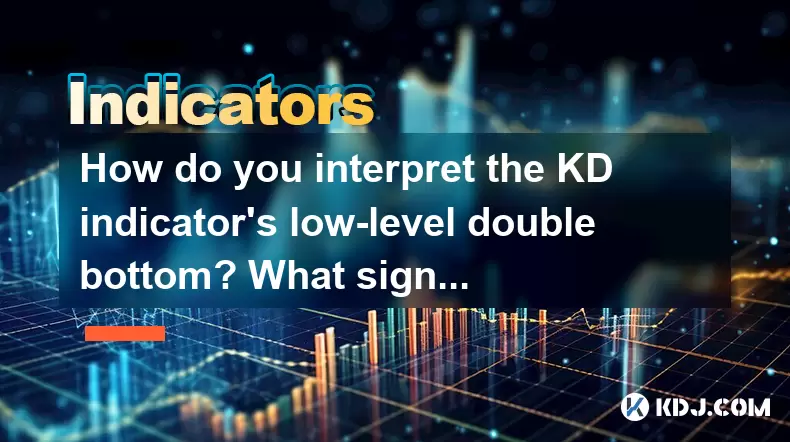
The KD indicator, also known as the Stochastic Oscillator, is a popular tool among cryptocurrency traders for identifying potential overbought and oversold conditions in the market. Understanding how to interpret its signals, such as a low-level double bottom and a high double top, can be crucial for making informed trading decisions. Let's delve into these patterns and what they signify.
Understanding the KD Indicator
The KD indicator consists of two lines: the %K line and the %D line. The %K line is typically faster and more sensitive to price changes, while the %D line is a moving average of the %K line, providing a smoother signal. The indicator oscillates between 0 and 100, with readings above 80 often considered overbought and readings below 20 considered oversold.
Low-Level Double Bottom on the KD Indicator
A low-level double bottom on the KD indicator occurs when the %K and %D lines dip into the oversold territory (below 20) twice, forming two distinct troughs at roughly the same level. This pattern suggests that the market has tested the oversold condition twice but failed to break lower, indicating a potential exhaustion of selling pressure.
Interpreting the Low-Level Double Bottom:
Confirmation of a Potential Reversal: A low-level double bottom on the KD indicator can signal that the downward momentum is weakening. If the %K and %D lines begin to rise after the second bottom, it may indicate that buyers are stepping in, and a potential upward reversal could be on the horizon.
Price Action Confirmation: Traders often look for confirmation from price action. If the price of the cryptocurrency also forms a double bottom pattern around the same time, it strengthens the case for a potential bullish reversal.
Entry Points for Long Positions: Many traders use the low-level double bottom as a signal to enter long positions. They might wait for the %K and %D lines to cross above the 20 level and continue to rise, indicating increasing buying pressure.
Example of a Low-Level Double Bottom
Let's consider a hypothetical scenario with Bitcoin (BTC). Imagine that the KD indicator for BTC dips below 20 and forms a trough at 15. The price of BTC also reaches a low of $20,000. After a brief recovery, the KD indicator dips again to 15, and the price of BTC tests the $20,000 level once more. If the KD lines start to rise and cross above 20, and the price of BTC begins to climb, this could be a signal for traders to enter long positions.
High Double Top on the KD Indicator
A high double top on the KD indicator occurs when the %K and %D lines reach into the overbought territory (above 80) twice, forming two distinct peaks at roughly the same level. This pattern suggests that the market has tested the overbought condition twice but failed to break higher, indicating a potential exhaustion of buying pressure.
Interpreting the High Double Top:
Confirmation of a Potential Reversal: A high double top on the KD indicator can signal that the upward momentum is weakening. If the %K and %D lines begin to fall after the second peak, it may indicate that sellers are stepping in, and a potential downward reversal could be on the horizon.
Price Action Confirmation: Similar to the low-level double bottom, traders often look for confirmation from price action. If the price of the cryptocurrency also forms a double top pattern around the same time, it strengthens the case for a potential bearish reversal.
Entry Points for Short Positions: Many traders use the high double top as a signal to enter short positions. They might wait for the %K and %D lines to cross below the 80 level and continue to fall, indicating increasing selling pressure.
Example of a High Double Top
Let's consider another hypothetical scenario with Ethereum (ETH). Imagine that the KD indicator for ETH rises above 80 and forms a peak at 85. The price of ETH also reaches a high of $3,000. After a brief pullback, the KD indicator rises again to 85, and the price of ETH tests the $3,000 level once more. If the KD lines start to fall and cross below 80, and the price of ETH begins to decline, this could be a signal for traders to enter short positions.
Practical Application of KD Indicator Signals
When applying the KD indicator in real trading scenarios, it's essential to combine these signals with other technical analysis tools and indicators to increase the probability of successful trades. Here are some practical steps for using the KD indicator:
Identify the Pattern: Look for the low-level double bottom or high double top patterns on the KD indicator. Ensure that the %K and %D lines form clear and distinct troughs or peaks in the oversold or overbought zones.
Confirm with Price Action: Check if the price of the cryptocurrency is forming a similar pattern. A double bottom in price action can confirm a low-level double bottom on the KD indicator, and a double top in price action can confirm a high double top on the KD indicator.
Wait for Confirmation: For a low-level double bottom, wait for the %K and %D lines to cross above 20 and continue to rise. For a high double top, wait for the %K and %D lines to cross below 80 and continue to fall.
Set Entry and Exit Points: Once the pattern is confirmed, set entry points for long positions (after a low-level double bottom) or short positions (after a high double top). Use stop-loss orders to manage risk and take-profit orders to secure gains.
Common Mistakes to Avoid
When using the KD indicator, traders should be aware of common pitfalls that can lead to misinterpretations and poor trading decisions:
Overreliance on a Single Indicator: The KD indicator should be used in conjunction with other technical analysis tools, such as moving averages, RSI, and volume indicators, to get a more comprehensive view of the market.
Ignoring Market Context: Always consider the broader market context, including trends, news, and sentiment, when interpreting KD indicator signals. A low-level double bottom or high double top may not be as significant in a strong trending market.
Failing to Wait for Confirmation: Jumping into trades based solely on the initial formation of a double bottom or double top without waiting for confirmation can lead to false signals and losses.
Frequently Asked Questions
Q1: Can the KD indicator be used effectively in all market conditions?
The KD indicator can be useful in various market conditions, but its effectiveness may vary. In ranging markets, the KD indicator tends to perform better as it can more accurately identify overbought and oversold conditions. In trending markets, the KD indicator may produce more false signals, so it's essential to use it in conjunction with trend-following indicators.
Q2: How can I adjust the KD indicator settings for different cryptocurrencies?
The default settings for the KD indicator are typically a 14-period %K and a 3-period %D. However, you can adjust these settings based on the volatility and trading characteristics of different cryptocurrencies. For highly volatile assets like altcoins, you might consider using shorter periods (e.g., 10-period %K and 2-period %D) to capture quicker price movements. For less volatile assets like Bitcoin, longer periods (e.g., 20-period %K and 5-period %D) might be more suitable.
Q3: What other indicators complement the KD indicator in trading strategies?
Several indicators can complement the KD indicator to enhance trading strategies:
Moving Averages: Use moving averages to identify the overall trend and confirm KD indicator signals. For example, a low-level double bottom on the KD indicator in conjunction with a bullish crossover of moving averages can provide a strong buy signal.
Relative Strength Index (RSI): The RSI can confirm overbought and oversold conditions identified by the KD indicator. If both indicators show similar conditions, it strengthens the signal.
Volume Indicators: Volume can confirm the strength of a trend or reversal. High volume during a low-level double bottom or high double top can indicate strong buying or selling pressure, respectively.
Q4: How do I manage risk when trading based on KD indicator signals?
Risk management is crucial when trading with the KD indicator. Here are some strategies to manage risk effectively:
Use Stop-Loss Orders: Always set stop-loss orders to limit potential losses. Place stop-loss orders below the recent low for long positions and above the recent high for short positions.
Position Sizing: Determine the appropriate position size based on your risk tolerance and the volatility of the cryptocurrency. Smaller positions can help manage risk in highly volatile markets.
Diversify Trades: Avoid putting all your capital into a single trade. Diversify your trades across different cryptocurrencies and timeframes to spread risk.
Monitor and Adjust: Continuously monitor your trades and be ready to adjust your stop-loss and take-profit levels based on market conditions and new information.
Disclaimer:info@kdj.com
The information provided is not trading advice. kdj.com does not assume any responsibility for any investments made based on the information provided in this article. Cryptocurrencies are highly volatile and it is highly recommended that you invest with caution after thorough research!
If you believe that the content used on this website infringes your copyright, please contact us immediately (info@kdj.com) and we will delete it promptly.
- Alpaca Finance (ALPACA)
- 2025-06-07 02:10:13
- Arbitrum’s 200 million ARB Gaming Catalyst Program, now rebranded to Arbitrum Gaming Ventures, has announced its first $10 million cohort of investments and grants.
- 2025-06-07 02:10:13
- Getting Started with Bitcoin Has Never Been Easier. Meet Bitcoin Solaris, Mobile-First Crypto Mining
- 2025-06-07 02:05:12
- $PEPE /USDT – Bull Run Alert: Meme Madness Heating Up!
- 2025-06-07 02:05:12
- The ether-bitcoin (ETH/BTC) ratio has reached an “extremely undervalued” zone
- 2025-06-07 02:00:20
- Ether breaks multimonth downtrend as traders target $3,000 ETH price
- 2025-06-07 02:00:20
Related knowledge
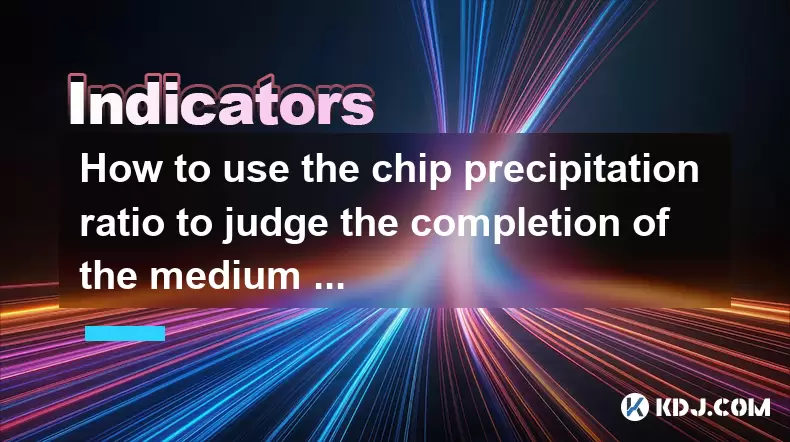
How to use the chip precipitation ratio to judge the completion of the medium and long-term bottom construction?
Jun 04,2025 at 03:36am
The chip precipitation ratio is a crucial metric used by investors to assess the accumulation of chips (or shares) at different price levels over time. This ratio helps in understanding the distribution of chips and can be a powerful tool for determining the completion of medium and long-term bottom construction in the cryptocurrency market. By analyzin...
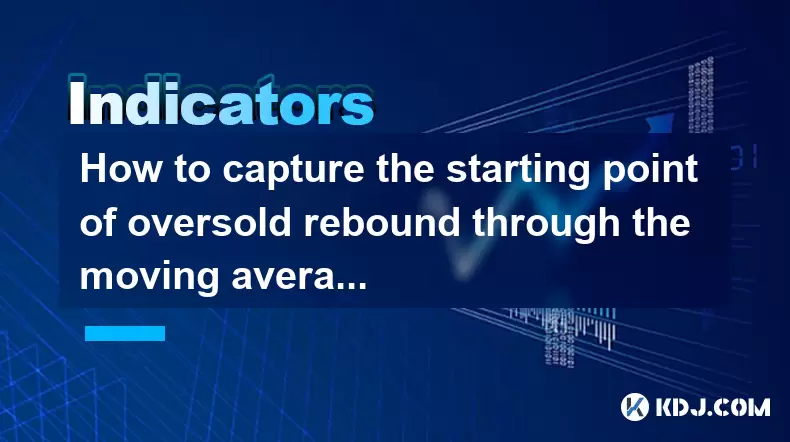
How to capture the starting point of oversold rebound through the moving average gravity reversal strategy?
Jun 04,2025 at 01:01pm
The moving average gravity reversal strategy is a sophisticated approach used by traders to identify potential entry points for buying cryptocurrencies when they are considered oversold. This strategy leverages the concept of moving averages to pinpoint moments when a cryptocurrency might be poised for a rebound. In this article, we will delve into the ...
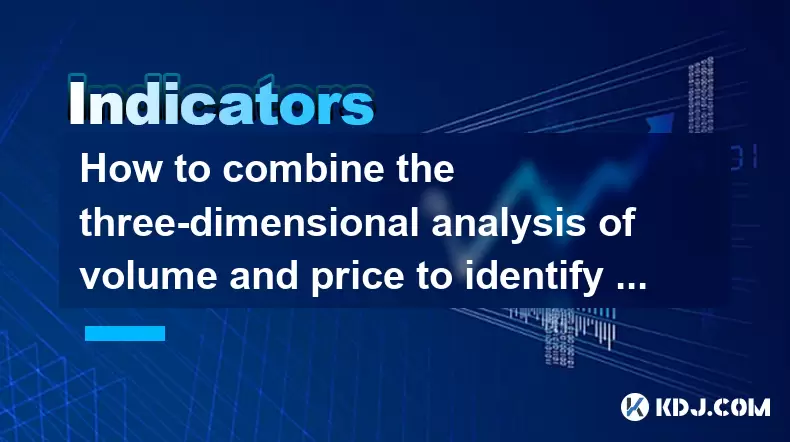
How to combine the three-dimensional analysis of volume and price to identify the golden buying point of breakthrough and retracement?
Jun 03,2025 at 11:42pm
In the dynamic world of cryptocurrencies, identifying the optimal buying points is crucial for maximizing profits and minimizing risks. One effective method to achieve this is by combining three-dimensional analysis of volume and price to pinpoint the golden buying points during breakouts and retracements. This article will delve into how to use this ap...
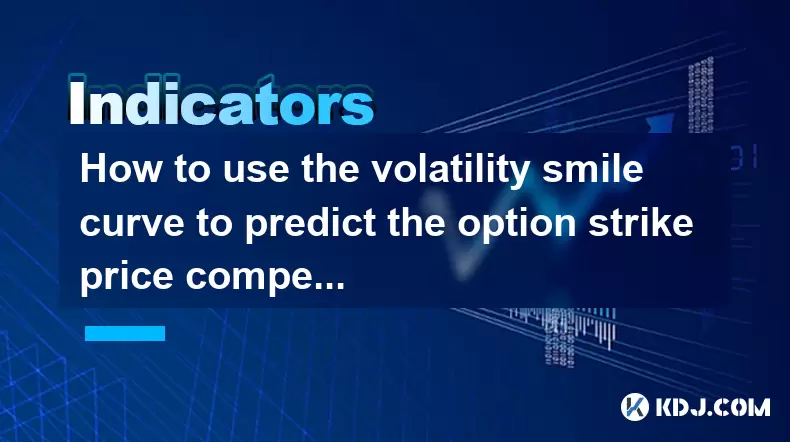
How to use the volatility smile curve to predict the option strike price competition area?
Jun 06,2025 at 01:01pm
The volatility smile curve is a graphical representation that shows the implied volatility of options across different strike prices for a given expiration date. It is called a 'smile' because the curve often takes the shape of a smile, with higher implied volatilities for options that are deep in-the-money or deep out-of-the-money, and lower implied vo...
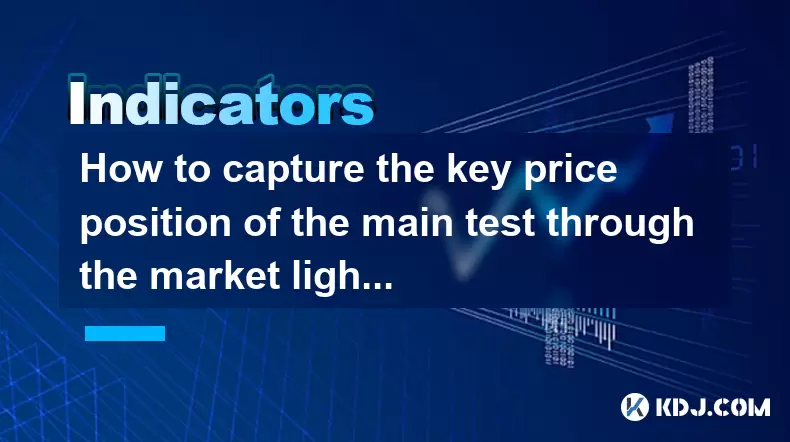
How to capture the key price position of the main test through the market lightning chart?
Jun 02,2025 at 06:07pm
Introduction to Market Lightning ChartThe market lightning chart is a powerful tool used by cryptocurrency traders to visualize price movements and identify key price positions. This chart type provides a detailed view of market activity, allowing traders to spot trends, reversals, and other significant price levels quickly. By understanding how to use ...
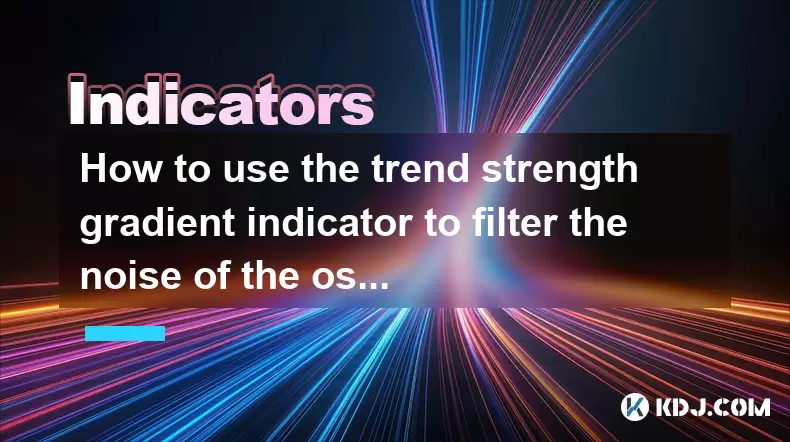
How to use the trend strength gradient indicator to filter the noise of the oscillating market?
Jun 06,2025 at 06:15pm
The trend strength gradient indicator is a powerful tool used by cryptocurrency traders to analyze market trends and filter out the noise that often accompanies oscillating markets. This indicator helps traders identify the strength of a trend, enabling them to make more informed decisions. In this article, we will explore how to effectively use the tre...

How to use the chip precipitation ratio to judge the completion of the medium and long-term bottom construction?
Jun 04,2025 at 03:36am
The chip precipitation ratio is a crucial metric used by investors to assess the accumulation of chips (or shares) at different price levels over time. This ratio helps in understanding the distribution of chips and can be a powerful tool for determining the completion of medium and long-term bottom construction in the cryptocurrency market. By analyzin...

How to capture the starting point of oversold rebound through the moving average gravity reversal strategy?
Jun 04,2025 at 01:01pm
The moving average gravity reversal strategy is a sophisticated approach used by traders to identify potential entry points for buying cryptocurrencies when they are considered oversold. This strategy leverages the concept of moving averages to pinpoint moments when a cryptocurrency might be poised for a rebound. In this article, we will delve into the ...

How to combine the three-dimensional analysis of volume and price to identify the golden buying point of breakthrough and retracement?
Jun 03,2025 at 11:42pm
In the dynamic world of cryptocurrencies, identifying the optimal buying points is crucial for maximizing profits and minimizing risks. One effective method to achieve this is by combining three-dimensional analysis of volume and price to pinpoint the golden buying points during breakouts and retracements. This article will delve into how to use this ap...

How to use the volatility smile curve to predict the option strike price competition area?
Jun 06,2025 at 01:01pm
The volatility smile curve is a graphical representation that shows the implied volatility of options across different strike prices for a given expiration date. It is called a 'smile' because the curve often takes the shape of a smile, with higher implied volatilities for options that are deep in-the-money or deep out-of-the-money, and lower implied vo...

How to capture the key price position of the main test through the market lightning chart?
Jun 02,2025 at 06:07pm
Introduction to Market Lightning ChartThe market lightning chart is a powerful tool used by cryptocurrency traders to visualize price movements and identify key price positions. This chart type provides a detailed view of market activity, allowing traders to spot trends, reversals, and other significant price levels quickly. By understanding how to use ...

How to use the trend strength gradient indicator to filter the noise of the oscillating market?
Jun 06,2025 at 06:15pm
The trend strength gradient indicator is a powerful tool used by cryptocurrency traders to analyze market trends and filter out the noise that often accompanies oscillating markets. This indicator helps traders identify the strength of a trend, enabling them to make more informed decisions. In this article, we will explore how to effectively use the tre...
See all articles

























































































